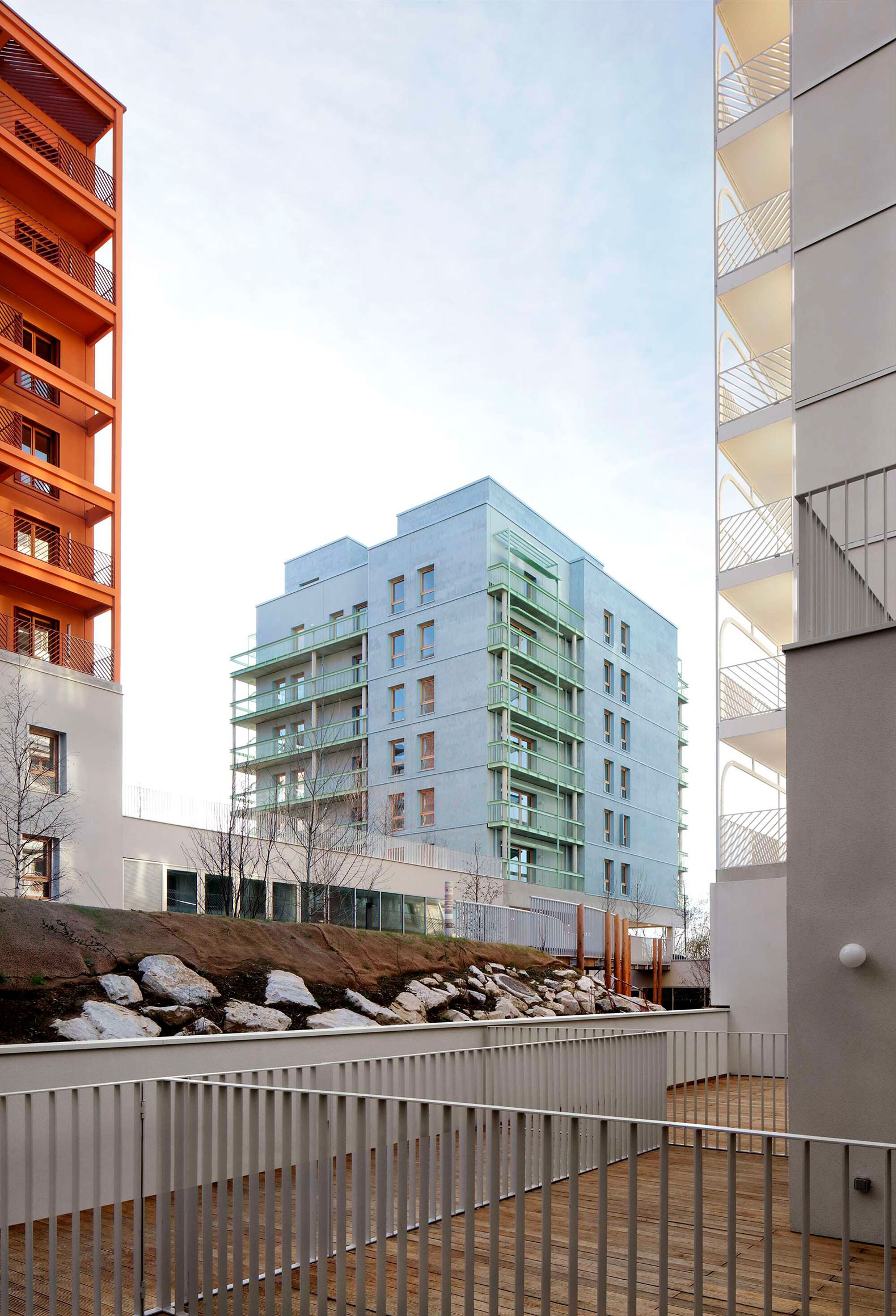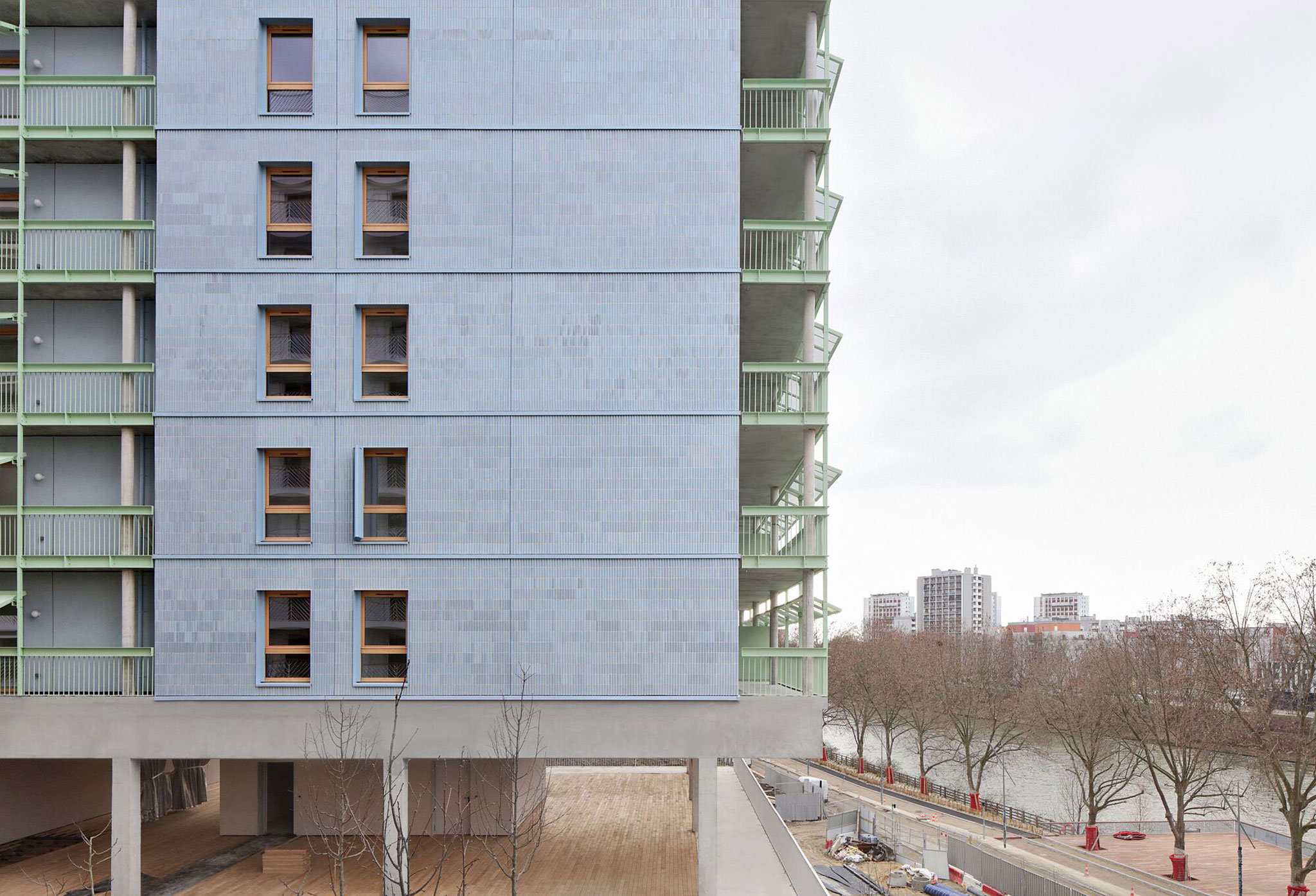
The project coordinated by uapS will have 643 homes, divided into 239 for owners, 95 social rentals, 100 intermediate rentals, a student residence and a social residence for people with disabilities. Located on a slope towards the Seine River, the complex is integrated into the topography, providing spaces that function on a metropolitan scale, thus ensuring functional and aesthetic harmony.
The building envelopes have prefabricated facades with a wooden structure for buildings of up to six floors and on a concrete structure with low carbon emissions for those of up to ten floors, seeking to reduce the carbon footprint of the buildings.

The Athlete's Village - Plot 4. Les Quinconces by uapS. Photograph by Filip Dujardin.
Project description by uapS
In Saint-Ouen, Sector D of the Athletes' Village, known as "Les Quinconces" due to its unique urban layout, features 13 pastel-colored buildings along the Seine. These structures, built on an infrastructural base, will host nearly 3,000 athletes during the summer of 2024. Post-Olympics, this area is set to transform into a neighborhood fostering social diversity and employment. The base will be home to various activities, including the Social Sports Club, a cultural and sports hub open to the public.
The development will comprise 643 housing units, divided into 239 for homeownership, 95 social rentals, 100 intermediate rentals, a student residence, and a social residence catering to people with disabilities. The project, part of the urban plan by Dominique Perrault, was brought to life by a team of architects, landscape architects, engineering firms, and artists, coordinated by the UAPS office, which also designed the base and four buildings. UAPS aimed to introduce principles of similarity and variation in architectural elements, ensuring aesthetic coherence while allowing distinctive nuances among the buildings.
Topography and Space - Les Quinconces is situated on a terrain with a 12-meter slope from the Seine quays to Saint-Denis Street. The infrastructural base absorbs these variations, creating a floating platform for the residential buildings. The base's interior spaces facing the Seine are designed for metropolitan-scale activities, while those facing Saint-Denis Street are suited for local shops. This integration of topography, space, and programming ensures functional and aesthetic harmony.

Structure and Envelope - To align with construction decarbonization goals, the building envelopes feature prefabricated wood-framed facades. These elements are assembled on-site on a wooden frame for buildings up to six stories and on a low-carbon concrete structure for those up to ten stories. This construction system necessitates certain architectural constraints, such as the horizontal overlap of facade panels and defining the envelope as an independent element with its materiality.
Materiality and Colors - Terracotta, in various forms such as flat, rounded, or triangular glazed tiles, and traditional tiles, was chosen to adorn the wood-framed facades. Alongside mineral plasters, this materiality brings aesthetic unity to the buildings. The base features a gabion wall filled with terracotta manufacturing waste, stretching over 200 meters along Agnès Varda Street. This wall dresses the facades of technical rooms, embodying the project's philosophy of material reuse while reflecting the architectural envelope's colors, inspired by Philip Guston's painting.






















































